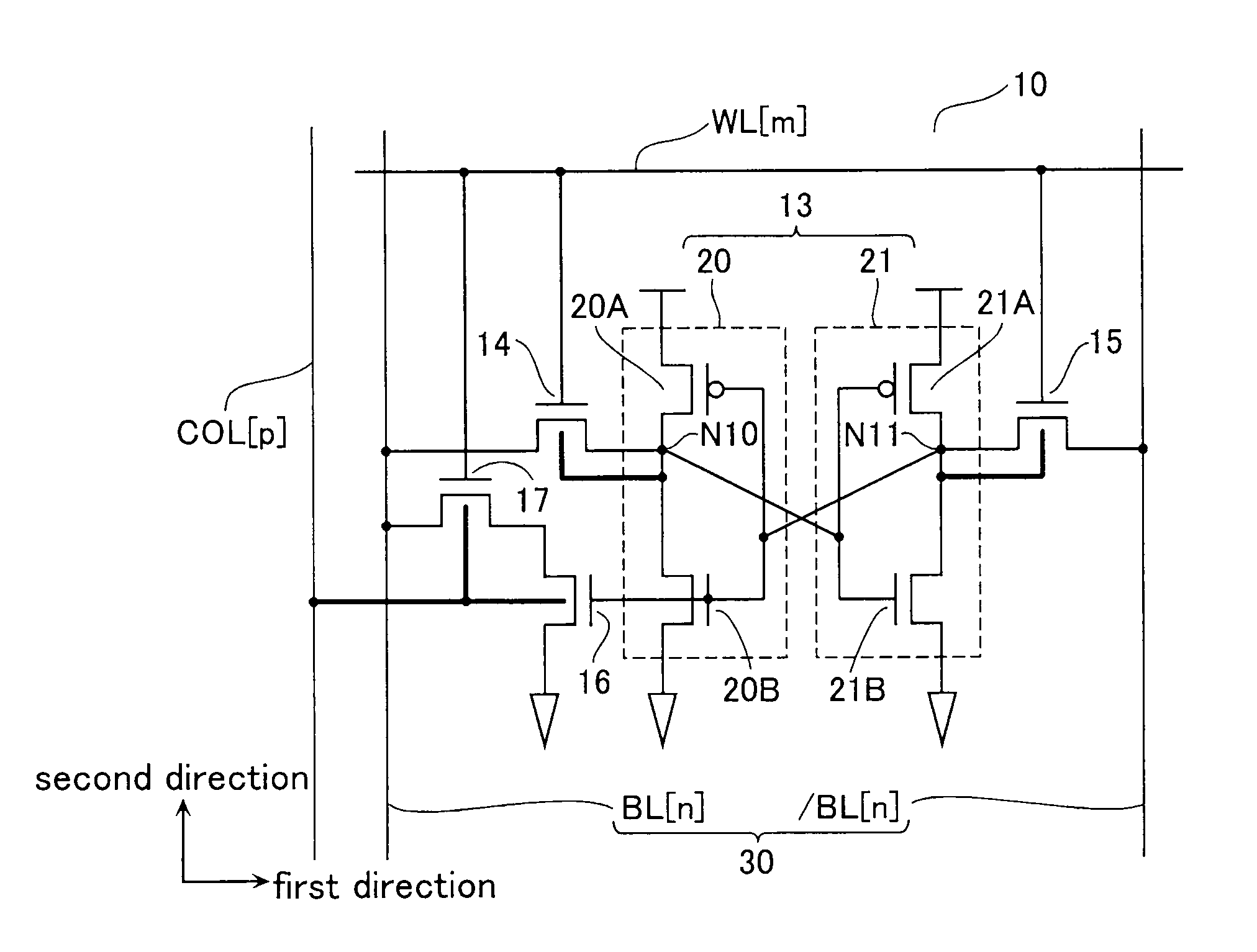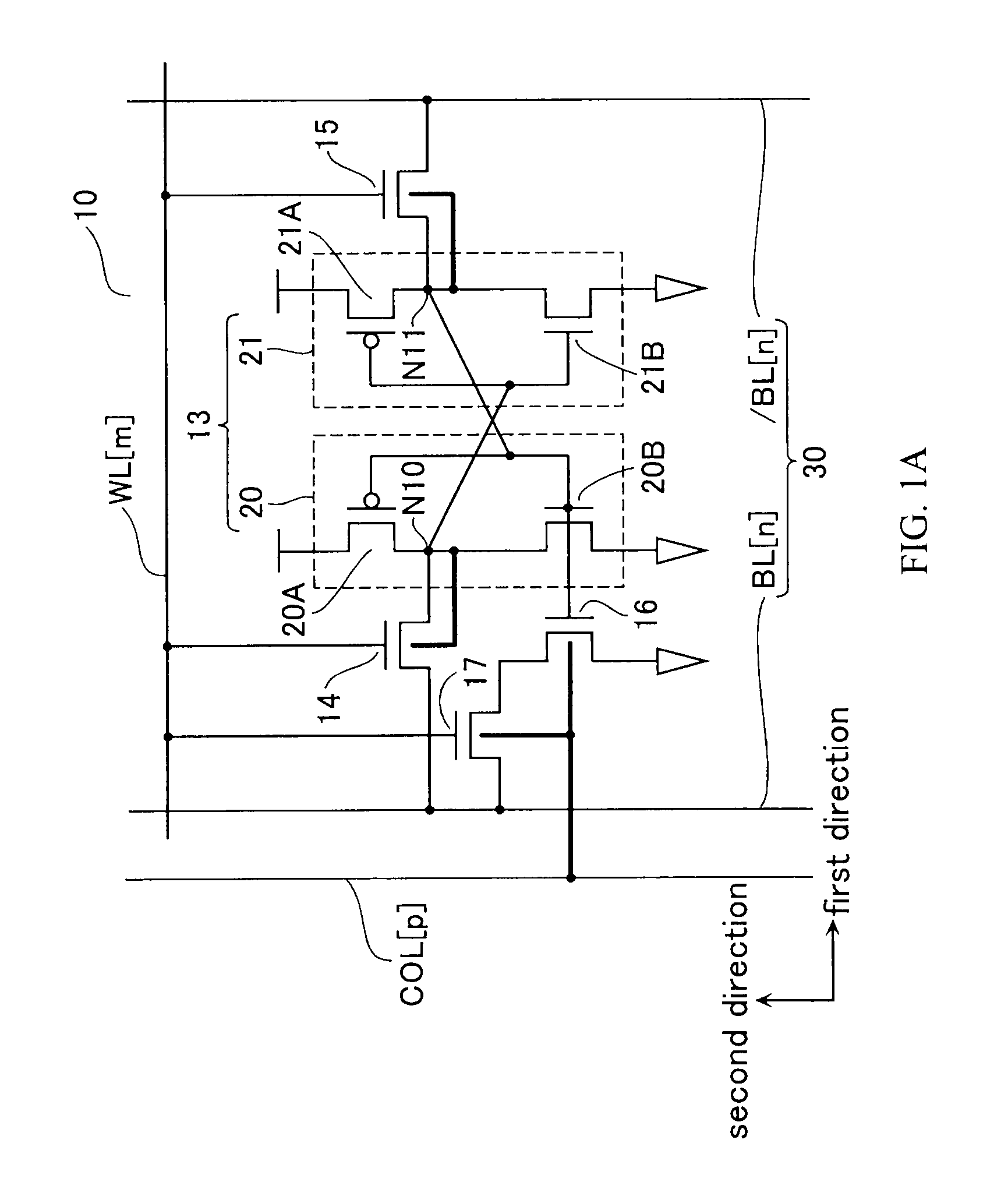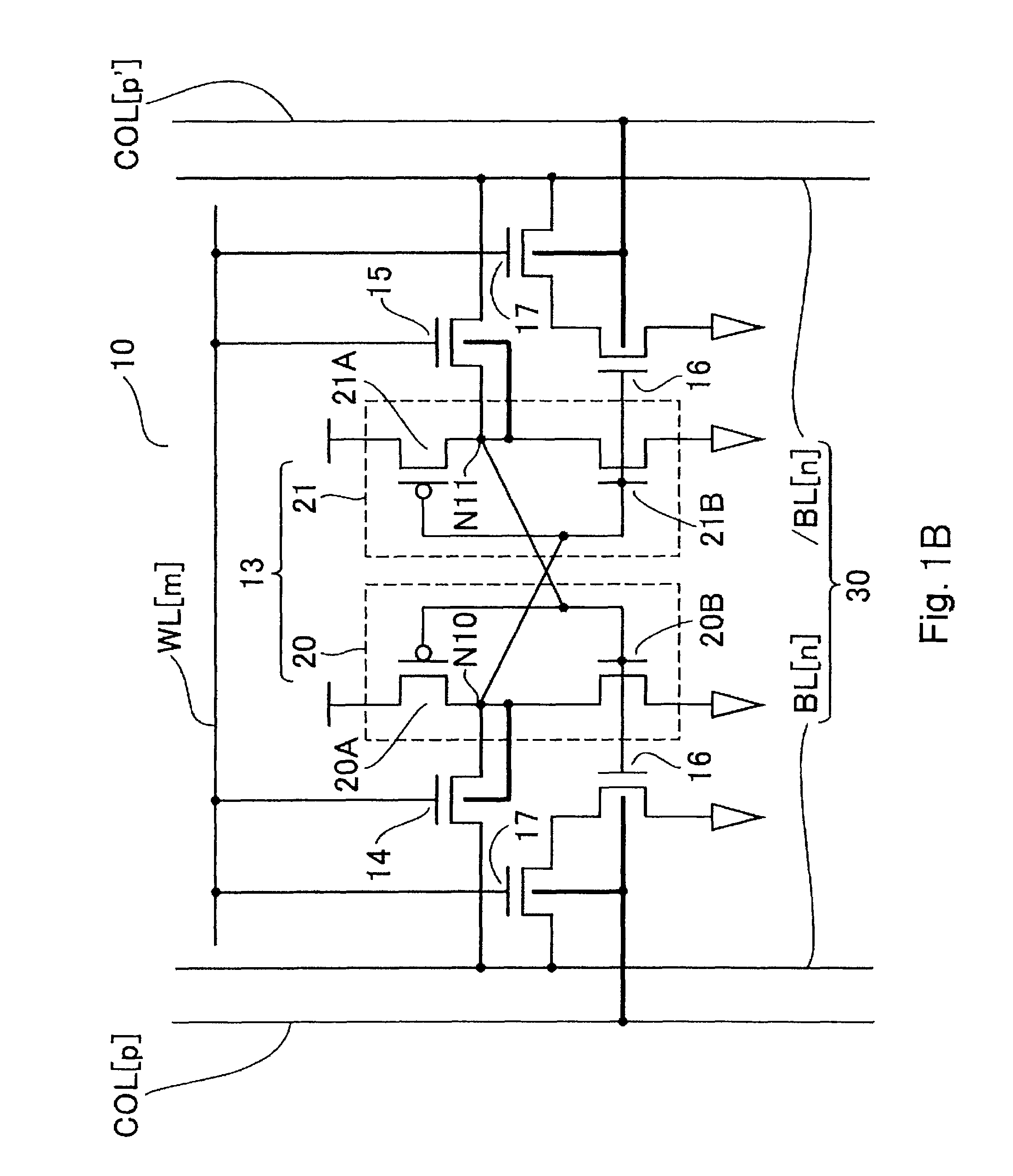Semiconductor memory device
a memory device and semiconductor technology, applied in semiconductor devices, digital storage, instruments, etc., can solve the problems of lowering the supply voltage, unnecessary writing, and affecting the operation of the device, and achieve the effect of high operational reliability
- Summary
- Abstract
- Description
- Claims
- Application Information
AI Technical Summary
Benefits of technology
Problems solved by technology
Method used
Image
Examples
first embodiment
[0035]FIG. 1A is an equivalent circuit diagram showing a part of a semiconductor memory device (hereinafter, SRAM) 10 according to a first embodiment of the present invention. Memory cells MC constituting the SRAM 10 according to the first embodiment are formed at intersections of a plurality of word lines WL arranged in a first direction and a plurality of bit lines BL arranged in a second direction. For convenience in description, FIG. 1A shows a memory cell MC formed at an intersection of a word line WL[m] and a pair of bit lines BL[n] and / BL[n] (where m and n are natural numbers).
[0036]The memory cell MC is formed between a bit line pair 30 consisting of the bit line BL[n] and the bit line / BL[n], and includes a data storage unit 13 formed by cross-coupling an inverter 20 to an inverter 21. The inverter 20 is formed by connecting a pMOS transistor 20A and an nMOS transistor 20B in series. The inverter 21 is formed by connecting a pMOS transistor 21A and an nMOS transistor 21B i...
second embodiment
[0090]FIG. 6A is an equivalent circuit diagram showing a part of an SRAM 10 according to a second embodiment of the present invention. As shown in FIG. 6A, the second embodiment has a configuration in which instead of the word line WL[m] and the bit line BL[n] in the first embodiment, two word lines WL[m] and two bit lines BL[n] are provided for writing and reading. Only this point is different from the first embodiment, and the other points are the same as those in the first embodiment. In FIG. 6A, the same reference numerals are given to the same portions as those in the first embodiment and the detailed description thereof will be omitted below.
[0091]Each of memory cells MC that constitute the SRAM 10 according to the second embodiment is formed at an intersection of a write word line WWL and a read word line RWL which are arranged in a first direction, and write bit lines WBL and a read bit line RBL which are arranged in a second direction. For convenience in description, FIG. 6...
third embodiment
[0130]FIG. 9 is an equivalent circuit diagram showing a part of the SRAM 10 according to a third embodiment of the present invention. Unlike the first embodiment, the third embodiment has no column selection line COL, as shown in FIG. 9. Moreover, a third embodiment has a configuration in which a back gate of a read transistor 17 is connected to a node N11, and a driver transistor 16 is formed of a single gate FinFET. Only these points are different from those in the first embodiment, and the other points are the same as those in the first embodiment. In FIG. 9, the same reference numerals are given to the same portions as those in the first embodiment, and the detailed description will be omitted below.
[0131]Memory cells MC that constitute the SRAM 10 according to the third embodiment are formed at intersections of a plurality of word lines WL arranged in a first direction and a plurality of bit lines BL arranged in a second direction. For convenience in description, FIG. 9 shows a...
PUM
 Login to View More
Login to View More Abstract
Description
Claims
Application Information
 Login to View More
Login to View More - R&D
- Intellectual Property
- Life Sciences
- Materials
- Tech Scout
- Unparalleled Data Quality
- Higher Quality Content
- 60% Fewer Hallucinations
Browse by: Latest US Patents, China's latest patents, Technical Efficacy Thesaurus, Application Domain, Technology Topic, Popular Technical Reports.
© 2025 PatSnap. All rights reserved.Legal|Privacy policy|Modern Slavery Act Transparency Statement|Sitemap|About US| Contact US: help@patsnap.com



